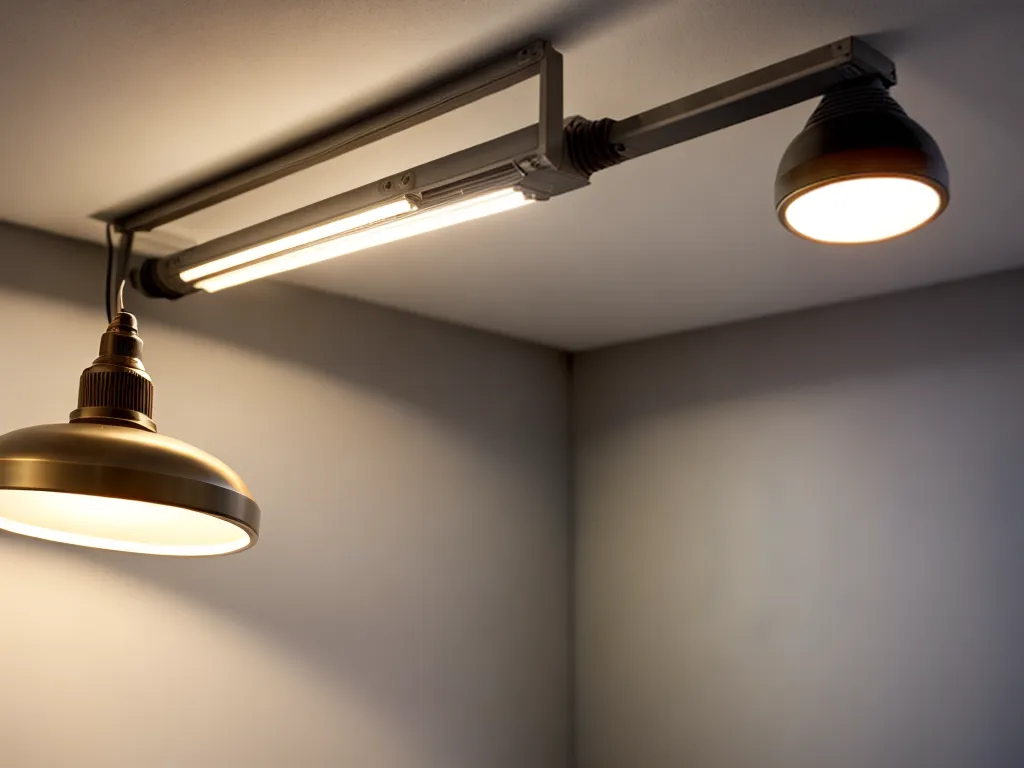
Introduction
Replacing commercial lighting fixtures can seem like a daunting task, but with proper planning and safety precautions, it is possible for a non-electrician to do. When done correctly, you can save on electrician fees and update your lighting exactly how you want. This comprehensive guide will walk you through everything you need to know to safely replace commercial lighting in your business or building.
Assessing Your Current Lighting and Needs
Before replacing any fixtures, take time to assess your current lighting setup and determine your needs.
-
What fixtures need replacing? Make a list of all lighting that is outdated, broken, inefficient, or otherwise needs upgrading.
-
What is the layout? Draw a diagram of the current lighting layout if needed to better understand spacing and positioning.
-
What are your goals? More natural light, energy efficiency, improved visibility? Defining goals will help choose replacement fixtures.
-
What is the existing wiring situation? Inspect how existing lights are wired to ensure compatible replacements.
Thoroughly understanding your current lighting and end goals will lead to the best replacements.
Choosing the Best New Fixtures
Once you know what needs replacing and why, it's time to choose new commercial lighting fixtures. Key factors to consider:
Type of Light
-
LED - Most energy efficient and long lasting. Higher upfront cost but long term savings.
-
Fluorescent - More efficient than incandescent. Prone to buzzing and flickering as they age.
-
Metal Halide - Bright, white light good for warehouses and manufacturing. Require time to warm up.
-
Incandescent - Least efficient but warm light. Only recommended for small accent lighting.
Brightness
- Measure current lighting brightness and choose replacements with equal or greater lumens. Insufficient light levels can reduce safety and productivity.
Color Temperature
-
Kelvin scale measures color temperature from warm (3000K) to bright white (4000-5000K).
-
Choose based on room use - warmer for relaxing, bright for tasks requiring focus.
Size and Mounting
-
Measure existing fixtures and choose same sizes for easy direct swaps.
-
Ensure mounting hardware is compatible with replacements, or budget for new mounting pieces.
-
For higher ceilings, look for lights with adjustable hangers.
Budget
-
Commercial lighting upgrades may qualify for rebates from local utilities - research options.
-
Buy in bulk for volume discounts and to match styles throughout the space.
-
Factor in costs for equipment rental if needed.
Safety First - Turning Off Power
Before touching any wiring or fixtures, you must disengage power to avoid electrocution.
Shutting Off Breakers
-
For small projects, shut off the breaker supplying power to the specific lights you'll be replacing.
-
Label breakers clearly to avoid shutting off unrelated equipment.
Locking Out Panel
For larger lighting retrofits:
-
Shut power off at the main breaker panel.
-
Use a lockout device to physically lock panel off - this prevents accidental re-engagement.
Testing Wires
Regardless of method used, always 100% confirm power is off by testing wires with a non-contact voltage tester before touching.
Removing Old Commercial Lighting Fixtures
With power disengaged, you can now safely work on removing old lighting.
Materials Needed
Assemble all necessary tools and supplies:
-
Ladder or lift to safely reach fixtures
-
Screwdrivers for removing cover plates and disconnecting wires
-
Wire cutters and wire strippers
-
Voltmeter to re-test wires are de-energized
-
Replacement mounting hardware if needed
Dismounting Fixtures
-
Remove any cover plates and inspect wiring connections. Take photos if needed.
-
Carefully disconnect wires, one at a time. Tape ends to keep organized.
-
Unscrew or remove any mounting bolts or other hardware.
-
Gently lower fixture and place safely out of the way.
Take care not to let wires fall into ceiling space, as this makes retrieving them difficult. Keep all hardware for re-installation.
Installing New Commercial Lighting
With old fixtures down, it's now time to safely install the new, upgraded lighting.
Inspecting New Fixture
-
Unpack replacement light and ensure you have all necessary parts.
-
Read any included instructions.
-
Check that wiring terminals match old fixture.
Mounting Light
- Using mounting hardware, attach new fixture to ceiling in same spot as old light (adjust height as needed).
Connecting Wires
-
Match wire colors from old fixture to new - hot to hot, neutral to neutral, ground to ground.
-
Securely fasten connections by twisting clockwise and tightening screws on terminals.
-
No bare wire should be exposed - just the twisted copper ends.
Re-Mounting Cover Plates
-
Tuck all connected wires safely inside fixture and reattach any cover plates.
-
Double check screws are tight. Loose connections cause fires.
Testing Function
-
Restore power at the breaker panel.
-
Test new lights by turning on switches.
-
If lights do not work, carefully re-check all connections.
Safety Tips and Precautions
Though DIY commercial lighting replacement can save money, safety should be the #1 priority. Keep these tips in mind:
-
Use sturdy ladders and never over-reach. Have someone spot you.
-
Working inside live panels risks electrocution - use lockout devices.
-
Never assume power is off - always test wires before touching.
-
Avoid working alone in case an emergency occurs.
-
Match wiring colors carefully and ensure tight, covered connections.
-
Stop immediately if unsure of any wiring and consult an electrician.
Replacing commercial lighting is very rewarding when done safely. Following these best practices will lead to successful upgrades. The improved aesthetics, light quality and energy savings will quickly pay back the time invested.